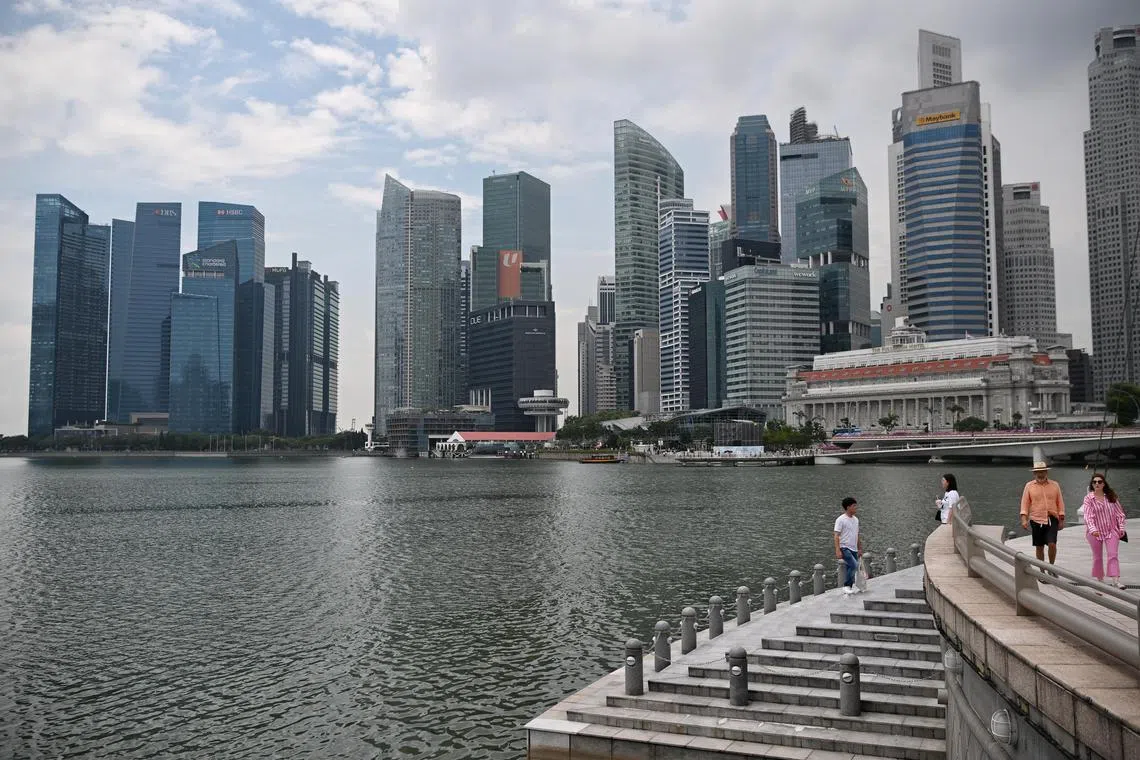Singapore seeks to raise issuance of govt securities to $1.5 trillion to grow CPF, local debt market
Sign up now: Get ST's newsletters delivered to your inbox

The limit was last raised in 2021, when Parliament authorised the increase from $690 billion to $1.065 trillion.
ST PHOTO: KUA CHEE SIONG
Follow topic:
SINGAPORE - The Republic is seeking to raise the issuance limit for more government securities to fund specific, non-spending purposes such as market development and meeting the investment needs of the Central Provident Fund (CPF).
Second Minister for Finance Chee Hong Tat on Nov 12 asked Parliament to approve a motion to raise the issuance limit for government securities and Treasury bills under the Government Securities (Debt Market and Investment) Act (GSA) to $1.515 trillion.
The issuance limit for Singapore Government Securities (SGS) (Market Development), Treasury bills (T-bills), Singapore Savings Bonds (SSB) and Special Singapore Government Securities (SSGS) is now at $1.065 trillion.
It was last raised in 2021 when Parliament authorised the increase from $690 billion to $1.065 trillion,
With the additional $450 billion now being proposed, the increase is intended to last till 2029.
More than 60 per cent of the increase is expected to be issued as SSGS. These are non-marketable securities, primarily issued for CPF investments.
They also serve to ensure safe and fair returns on CPF monies.
CPF monies are invested in SSGS, which are fully guaranteed by the Government.
This provides the assurance that the CPF Board will be able to pay the interest committed and monies due to CPF members.
“We expect CPF balances to continue increasing over the next five years due to growth in wages and CPF policy enhancements,” Mr Chee said.
In the five years between 2018 and 2023, the median gross monthly income from employment grew by 3.2 per cent a year.
Mr Chee cited examples of CPF policy enhancements including the higher CPF contribution rates for senior workers and CPF bonuses under the Majulah Package.
“These measures will enhance the retirement adequacy for our seniors and also increase CPF’s investment needs in the coming years. These in turn will require more issuance of SSGS,” he said.
The remaining 40 per cent is for projected issuances of SGS, T-bills and SSB to support the continued development of a vibrant SGS market.
The SGS market enables the growth of the corporate and retail debt market, and meets demand for high-quality liquid assets from financial institutions as the financial sector grows.
“We will continue to monitor the market demand for such publicly held debt instruments and will adjust the rate of issuance to meet this demand, if necessary,” Mr Chee said.
SGS and T-bills are marketable securities, issued to develop Singapore’s debt market and provide robust yields for the pricing of private debt securities.
These can foster the growth of an active secondary market by encouraging participation in the Singapore bond market. They also help to raise cash to meet temporary cash flow mismatches.
SSB are non-marketable securities and provide a long-term savings option that offers safe returns to individual investors.
The proceeds from the issuance of government securities and T-bills under the GSA are invested and are not used to fund government spending.
The Singapore Government, which holds an AAA credit rating, does not borrow for recurrent spending needs so as not to overly burden future generations, who will have to service the debt incurred by current and previous generations.
Only a small portion of the Government’s borrowing is used for spending, and this is issued under the Significant Infrastructure Government Loan Act (Singa) to finance nationally significant infrastructure projects. Singa borrowings are presently less than 2 per cent of total government borrowings and have a separate issuance limit from the GSA.
The increase in the issuance limit under the GSA also has no impact on the Government’s fiscal or net financial positions, Mr Chee said.
While Singapore’s gross debt versus its gross domestic product may appear large on its own, it does not fully reflect the country’s financial position as it does not consider Singapore’s assets, which continue to outweigh its debts.
The net asset position is reflected in the net investment returns generated on its reserves, which is made available for government spending via the Net Investment Returns Contribution.


